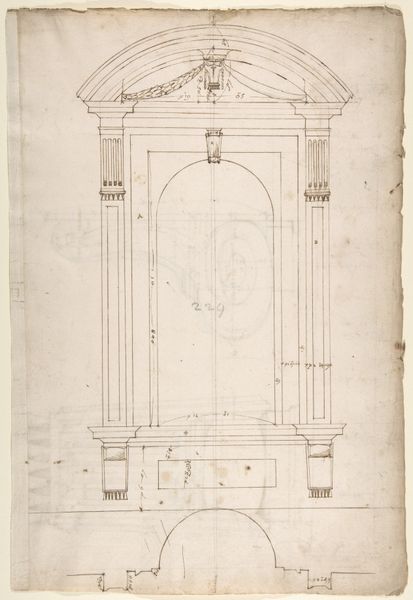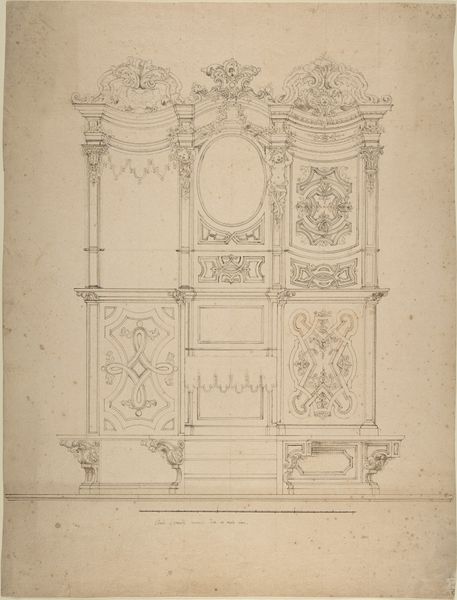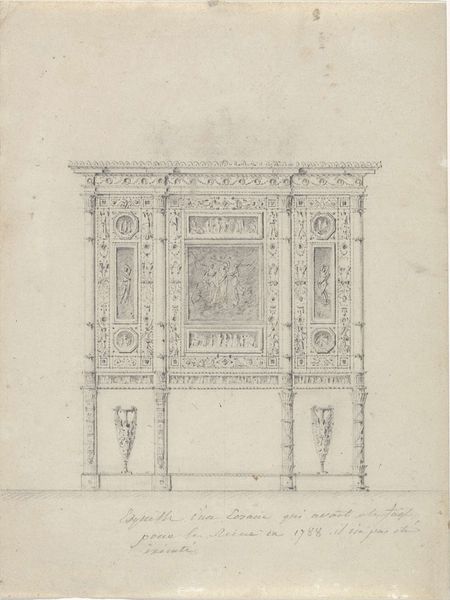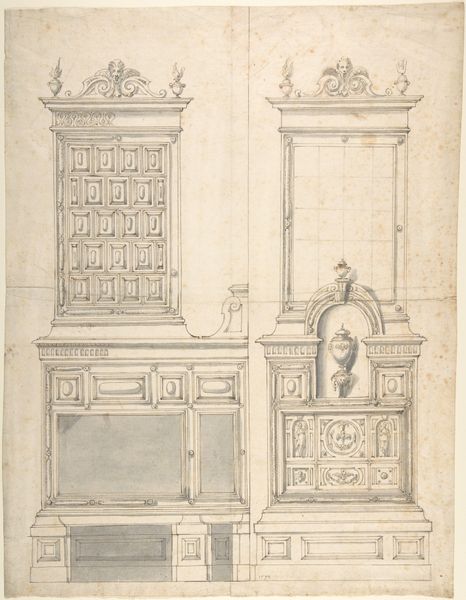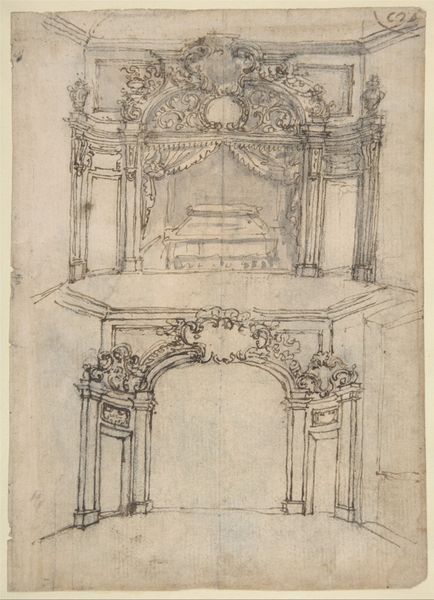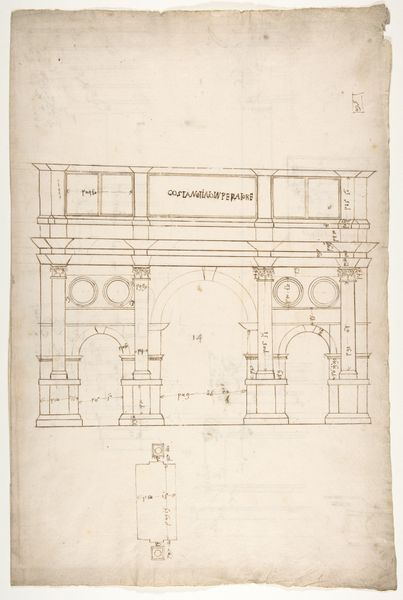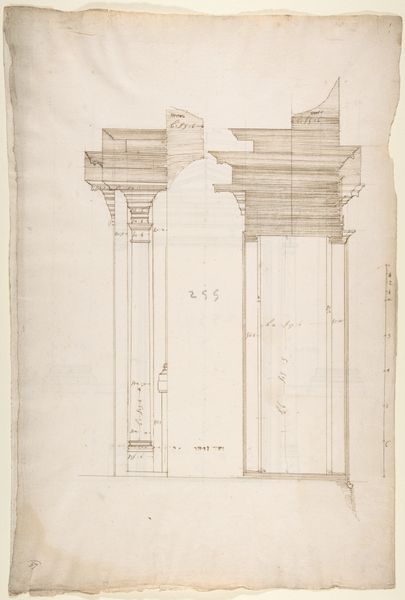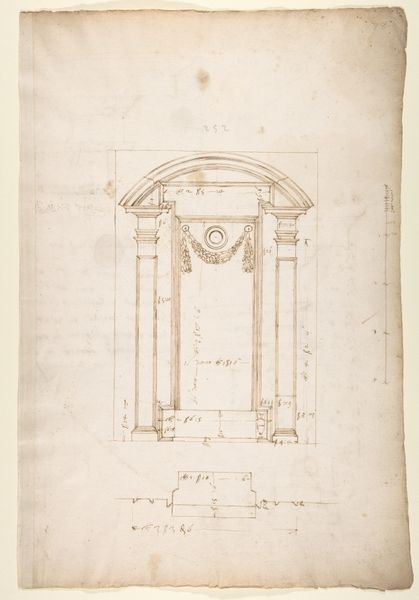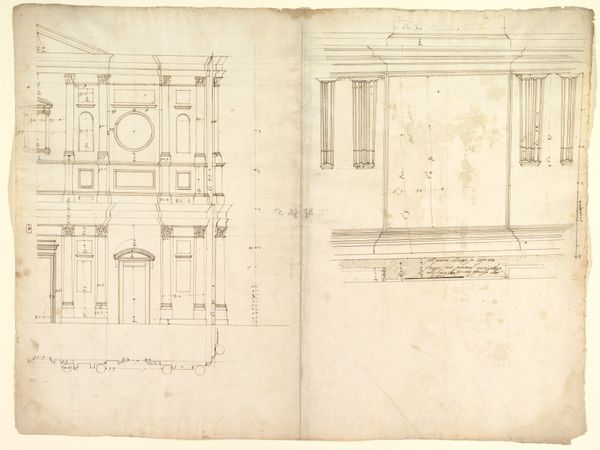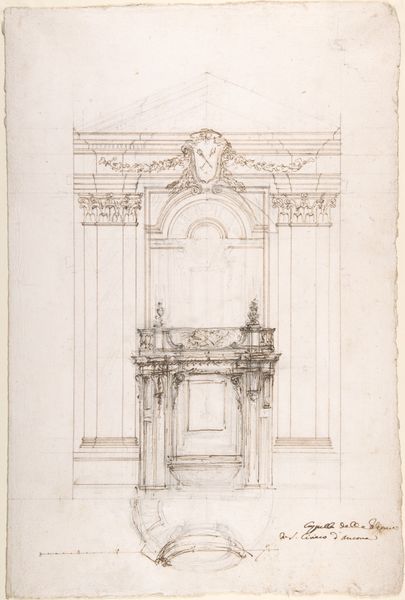
Unidentified, funerary altar, plan and elevations (recto) S. Giovanni Laterano, Oratorio della Santa Croce, paneling, elevation (verso) 1500 - 1560
0:00
0:00
drawing, print, paper, ink, architecture
#
architectural sketch
#
drawing
# print
#
book
#
paper
#
form
#
11_renaissance
#
ink
#
line
#
italian-renaissance
#
architecture
Dimensions: sheet: 15 3/8 x 11 1/8 in. (39 x 28.3 cm)
Copyright: Public Domain
Curator: Today, we're examining an architectural drawing from the High Renaissance, likely created between 1500 and 1560. It is attributed to an anonymous artist and offers a plan and elevations for a funerary altar and paneling, possibly intended for the Oratorio della Santa Croce at S. Giovanni Laterano. Editor: It feels so precise. Even in its unfinished state, the balance and order create an atmosphere of solemnity. Almost like a stage set. Curator: Observe the line work, Editor. Notice how the artist utilizes hatching and cross-hatching to indicate depth and shadow, contributing to the overall sense of three-dimensionality. The architectural elements are rendered with precision. Editor: The context is so vital here; funerary altars often commemorated wealthy patrons who enabled art. Their memories literally became enmeshed within its stonework. Did they truly comprehend how they’d be remembered? Curator: One cannot overlook the visual harmony in the columns, the meticulously rendered entablatures, and the decorative swags. See how these contribute to the overall symmetry? Editor: Symmetry and power often go hand-in-hand. The Renaissance emphasis on these classical elements wasn't just about aesthetics, it projected a vision of restored imperial authority. The church had the power. Curator: True, the symbolism of these elements is multifaceted. The Corinthian capitals, for instance, with their acanthus leaves, point towards ideals of refined beauty and classical erudition. The architraves show a knowledge of ancient architectural conventions. Editor: Yet funerary art had so many meanings for diverse beholders. Who might have viewed this design, what class, sex, even occupation may have helped people read it. Curator: Ultimately, this architectural drawing showcases the Renaissance commitment to classical ideals. We discern within its framework a visual language of humanism, reason, and order. Editor: Well said. But remember too, architecture acts like any record. It embodies its age, so decoding its patterns is always essential if one wishes to understand. Thank you.
Comments
No comments
Be the first to comment and join the conversation on the ultimate creative platform.
